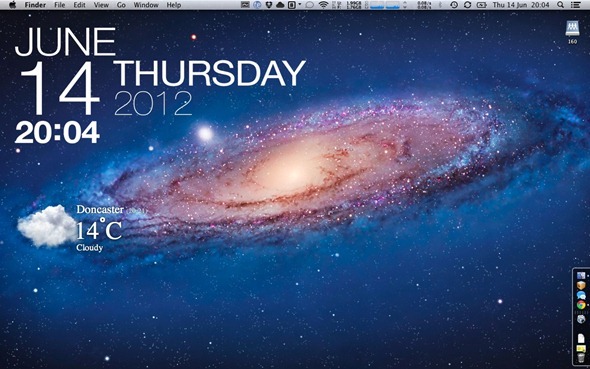USB C Hub Multiport Adapter - 7 in 1 Portable Space Aluminum Dongle with 4K HDMI Output, 3 USB 3.0 Ports, SD/Micro SD Card Reader Compatible for MacBook Pro, XPS More Type C Devices.
USB port types and names
USB (Universal Serial Bus) is an industry standard for connecting computers and other devices. It's available with many types of ports, and each type has a unique shape. On Mac computers, USB is available with these ports, depending on your Mac model:
USB-A

First of its kind, the Type-C Aluminum Stand & Hub elevates and transforms your Mac Mini into a powerful, surprisingly compact workstation. Equipped with a USB-C data port, three USB-A 3.0 ports, micro/SD card readers, and a 3.5mm headphone jack port, to provide convenient access to your peripherals. Workspace ONE ® Intelligent Hub is the app you use to register your device for access to resources within your organization. Download Hub for macOS.
Nba 2k12 for mac. 100,000 Virtual Currency. 50,000 MyTEAM Points.
Type USB-A ports are commonly called USB, USB 2, or USB 3 ports, depending on the USB specification they support. They aren't reversible, so a USB-A connector plugs into the port only when oriented correctly.
USB-C
Type USB-C ports are available as either standard USB-C ports or Thunderbolt 3 ports that also support USB-C connections. They both look the same, and the connector plugs into the port in either orientation.
Learn more about identifying the ports on your Mac, as well as the adapters and cables you can use to connect older devices to type USB-C ports.
With these endless customization options, Widget Launcher allows you to enhance your desktop like never before.Get Widget Launcher and you'll instantly have access to world clocks, weather, RSS feeds, calendars, calculators, CPU monitor, and more.  Widget Launcher (formerly Widgets HD) is the next generation of Gadgets for Windows 10. All for free.Two beautiful skins are included so you can personalize your widgets in any color you want.If you are a developer, you can also use the built in tools (beta) to debug extensions that you create. This redesigned Widget Launcher is now better than ever before.Now extensions are supported! So you can download additional skins and widgets right here in the Microsoft Store.
Widget Launcher (formerly Widgets HD) is the next generation of Gadgets for Windows 10. All for free.Two beautiful skins are included so you can personalize your widgets in any color you want.If you are a developer, you can also use the built in tools (beta) to debug extensions that you create. This redesigned Widget Launcher is now better than ever before.Now extensions are supported! So you can download additional skins and widgets right here in the Microsoft Store.
USB specifications
USB specifications are important primarily when you want the most speed and power for your USB device, or your device needs more power or is using too much power. Every USB port supports a particular USB specification, which determines the port's maximum>USB specifications on MacData transferPowerUSB 3.1 Gen 2
Also known as USB 3.2 Gen 2
Up to 10 GbpsUp to 15W at 5VUSB 3.1 Gen 1
Also known as USB 3.2 Gen 1 or USB 3
Up to 5 GbpsUp to 900 mA at 5VUSB 2.0
Up to 480 MbpsUp to 500 mA at 5VUSB 1.1
Up to 12 MbpsUp to 500 mA at 5V
To learn which specification is supported by a type USB-A or type USB-C port on your Mac model:
- Choose Apple menu > About This Mac, click Support, then click Specifications.
- Check the System Information app for more details, including about USB devices connected to USB ports on your Mac. Select USB in the sidebar, then select a USB bus on the right.
Hub For Macbook Air
Get the best performance from your USB devices
USB specifications all work with each other, but speed and power are limited by the cable or device that uses the earliest specification. For example, if you connect a USB 3 device to USB 2 port, your device is limited to USB 2 speeds, and it can't draw more power from the port than can be delivered over USB 2. In other words, to get the best performance, make sure that the USB port on your Mac and the USB cable to your device meet or exceed the USB specification of the device itself.
Look 's way, as they have justintroduced a new GoFlex for external drive collection that comespre-formatted in HFS+ format. Seagate goflex for mac drivers.
Hub For Mac Mini
If your Mac doesn't recognize a USB device after you plug it into your Mac:
- Check all connections: Unplug the device from your Mac, then plug it back in, and make sure that all cables and adapters are securely connected at both ends. Test with another cable or adapter, if available.
- Plug the device directly into your Mac instead of a USB hub or other device, and if necessary test with a different USB port on your Mac or device.
- Some devices need their own software, such as drivers or firmware. Others work without additional software. Check with the maker of your device, and install all available Apple software updates as well.
- If your device came with an AC power adapter, use it. Some devices can be powered by the USB port on your Mac. Others need more power than your Mac can provide.
- Restart your Mac.
Hub For Macbook Pro
Learn more
- USB 3 devices can create wireless interference that affects Wi-Fi and Bluetooth devices. Learn how to resolve Wi-Fi and Bluetooth issues caused by wireless interference.
- Mac notebook computers with USB-C or Thunderbolt 3 can charge over that port using a compatible USB-C power adapter and cable.